Abstract
OBJECTIVE: To determine factors influencing family physicians' and pediatricians' decisions to refer children with recurrent acute otitis media (RAOM) and otitis media with effusion (OME) to otolaryngologists for an opinion about tympanostomy tube insertion. DESIGN: Mailed survey. SETTING: Physicians' practices in Ontario. PARTICIPANTS: Random sample of 1459 family physicians and all 775 pediatricians in the province. MAIN OUTCOME MEASURES: Physicians' reports of the influence of 17 factors on decisions to refer (more likely, no influence, less likely to refer) and number of episodes of otitis media, months with effusion, level of hearing loss, or months of continuous antibiotics without improvement prompting referral. RESULTS: Physicians agreed (> 80% concordance) on six out of 17 factors as indications for referring children with RAOM or OME. Opinions about the importance of other factors varied widely. Family physicians would refer children with otitis media after fewer episodes of illness, fewer months of effusion, lower levels of hearing loss, and fewer months of prophylactic antibiotic therapy than pediatricians (all P < .001). Pediatricians would prescribe continuous antibiotics longer (11.8 weeks) than family physicians (8.9 weeks, P < .0001), which correlated with lower referral thresholds for family physicians. CONCLUSION: Family physicians' and pediatricians' self-reported referral practices for surgical opinions on children with otitis media varied considerably. These observations raise questions about the consistency of care for children with otitis media and whether revised clinical guidelines would be helpful.
Full text
PDF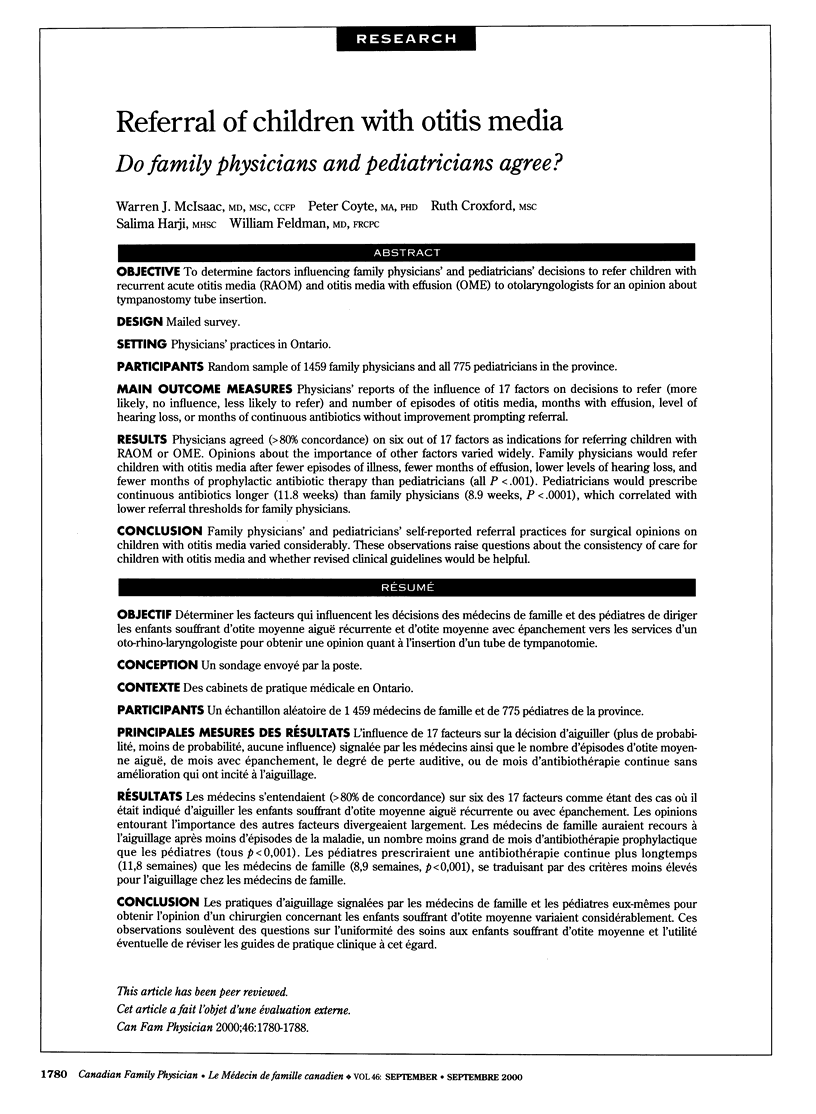
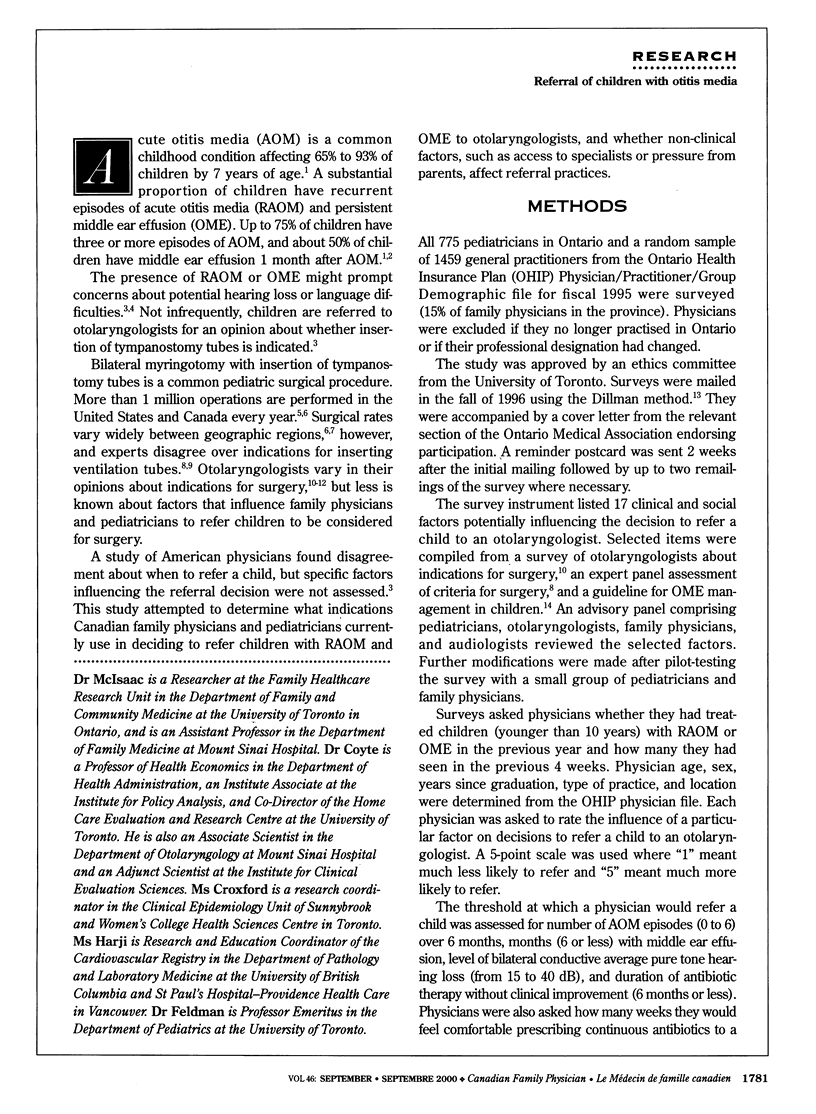
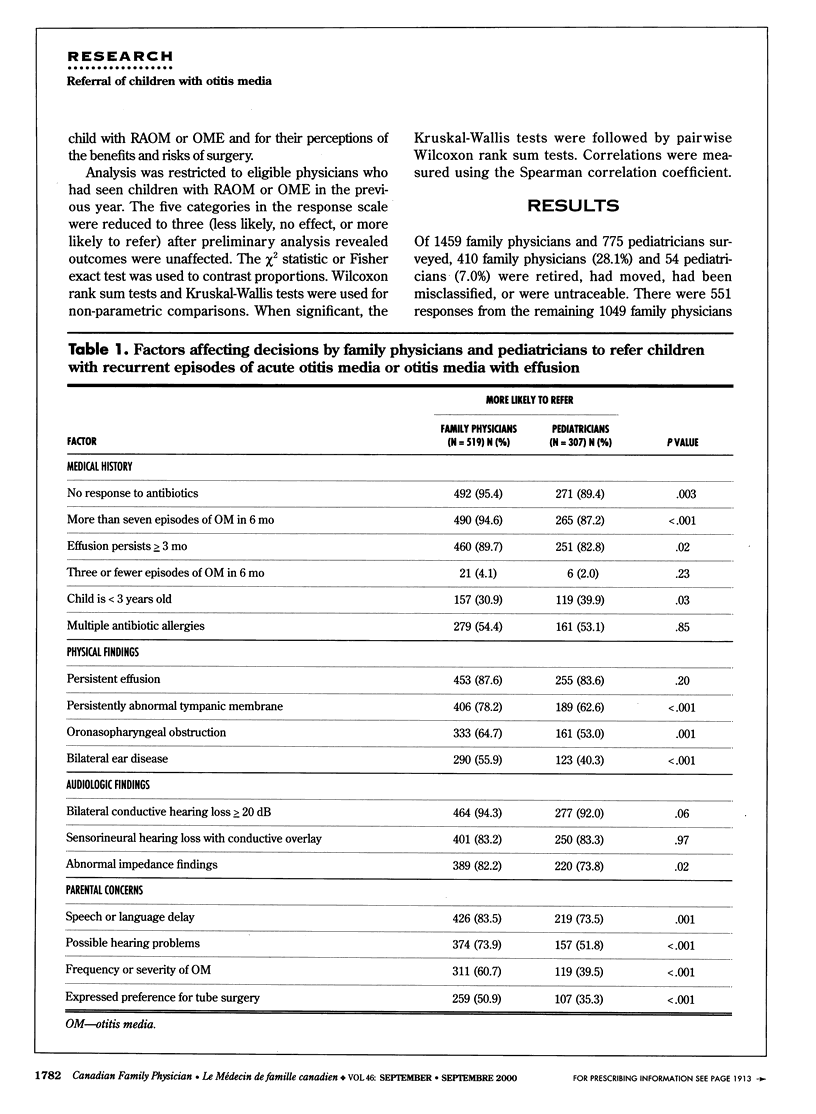
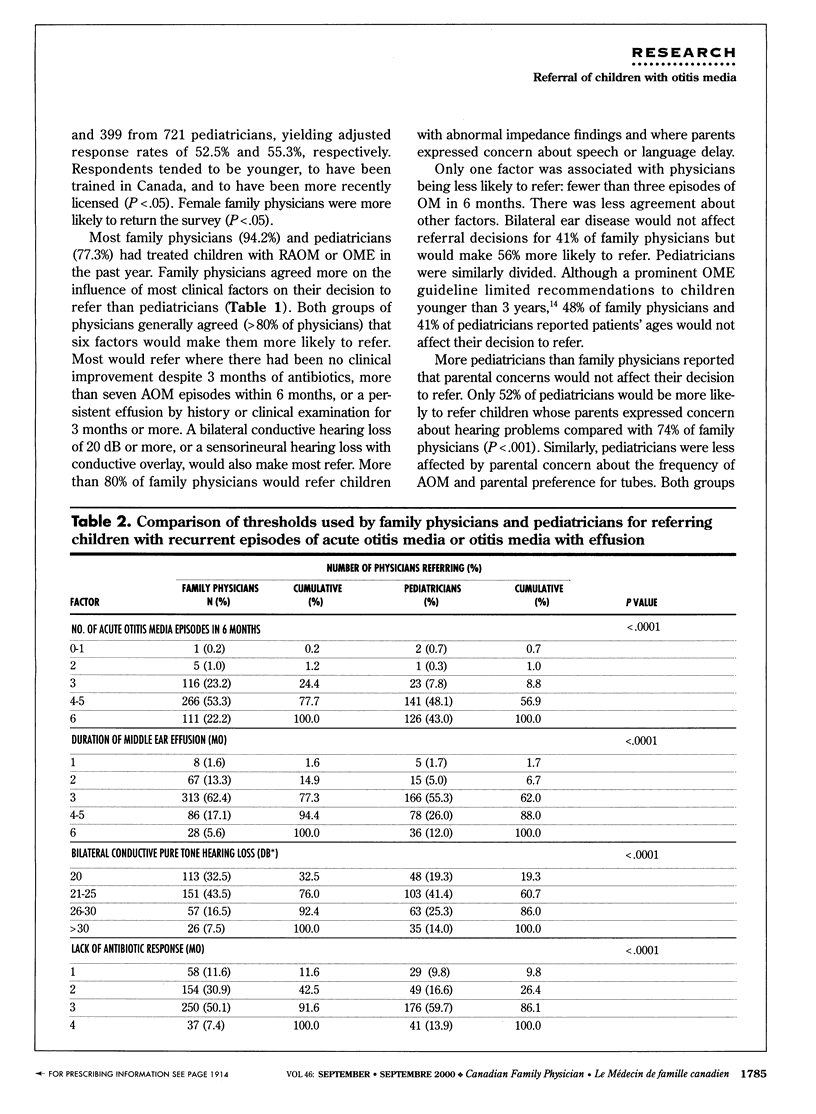
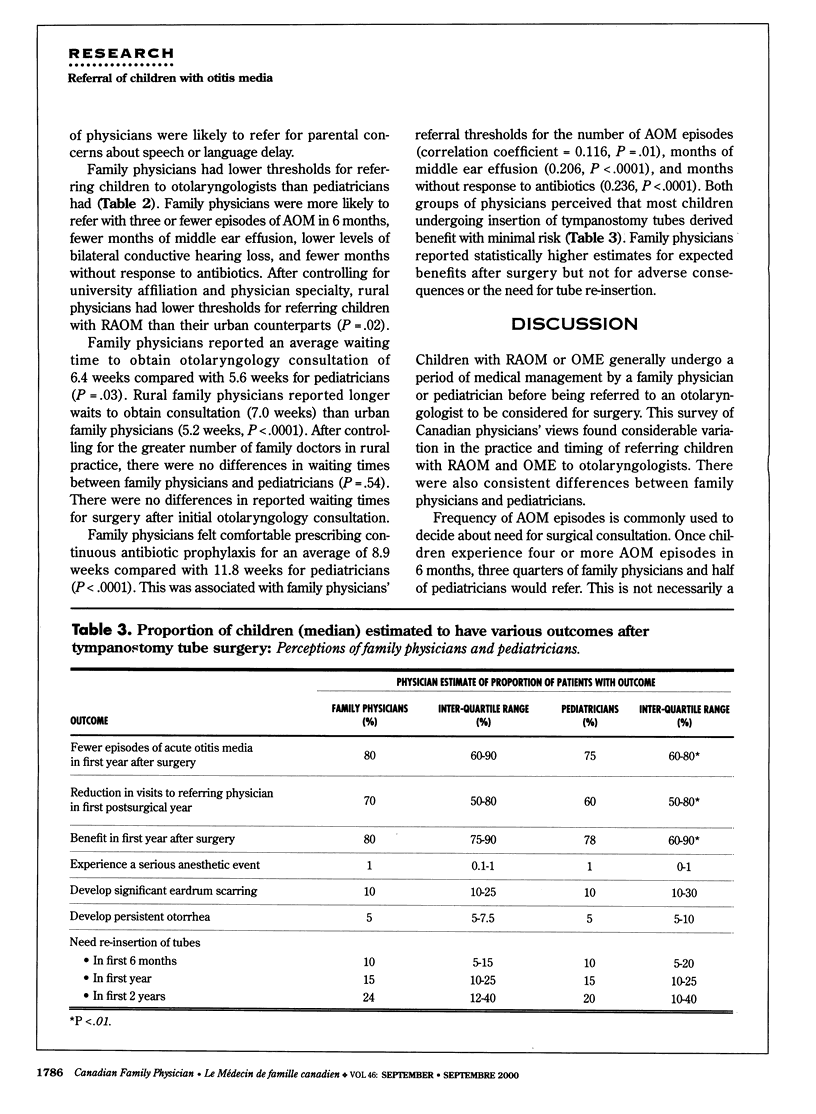
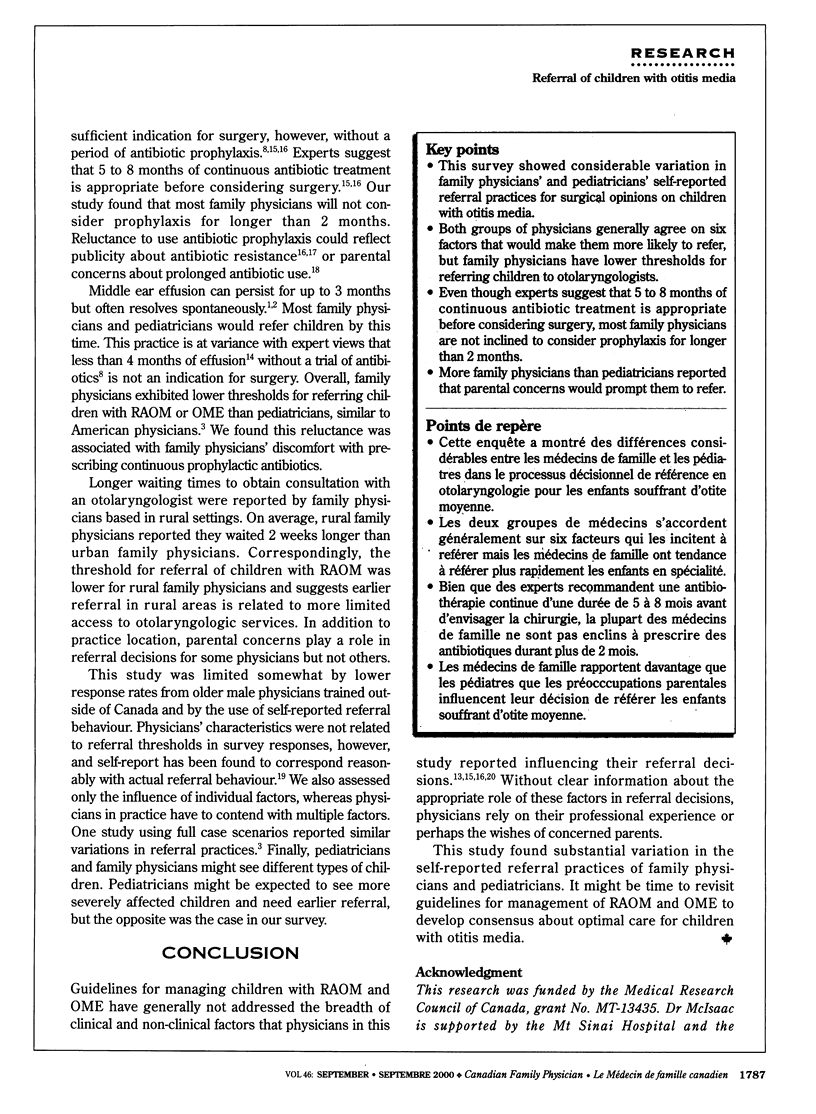
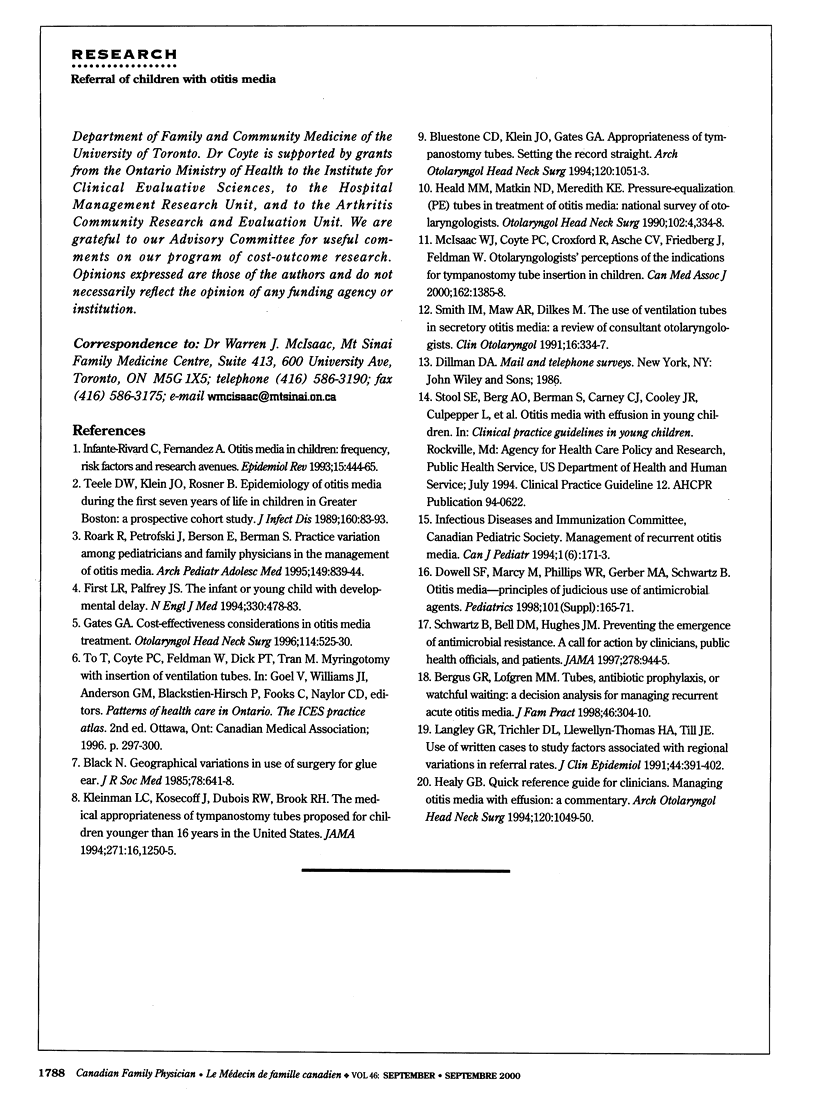
Selected References
These references are in PubMed. This may not be the complete list of references from this article.
- Bergus G. R., Lofgren M. M. Tubes, antibiotic prophylaxis, or watchful waiting: a decision analysis for managing recurrent acute otitis media. J Fam Pract. 1998 Apr;46(4):304–310. [PubMed] [Google Scholar]
- Black N. Geographical variations in use of surgery for glue ear. J R Soc Med. 1985 Aug;78(8):641–648. doi: 10.1177/014107688507800809. [DOI] [PMC free article] [PubMed] [Google Scholar]
- Bluestone C. D., Klein J. O., Gates G. A. 'Appropriateness' of tympanostomy tubes. Setting the record straight. Arch Otolaryngol Head Neck Surg. 1994 Oct;120(10):1051–1053. doi: 10.1001/archotol.1994.01880340005002. [DOI] [PubMed] [Google Scholar]
- First L. R., Palfrey J. S. The infant or young child with developmental delay. N Engl J Med. 1994 Feb 17;330(7):478–483. doi: 10.1056/NEJM199402173300708. [DOI] [PubMed] [Google Scholar]
- Gates G. A. Cost-effectiveness considerations in otitis media treatment. Otolaryngol Head Neck Surg. 1996 Apr;114(4):525–530. doi: 10.1016/S0194-59989670243-7. [DOI] [PubMed] [Google Scholar]
- Healy G. B. Quick reference guide for clinicians. Managing otitis media with effusion in young children: a commentary. Arch Otolaryngol Head Neck Surg. 1994 Oct;120(10):1049–1050. doi: 10.1001/archotol.1994.01880340003001. [DOI] [PubMed] [Google Scholar]
- Infante-Rivard C., Fernández A. Otitis media in children: frequency, risk factors, and research avenues. Epidemiol Rev. 1993;15(2):444–465. doi: 10.1093/oxfordjournals.epirev.a036129. [DOI] [PubMed] [Google Scholar]
- Langley G. R., Tritchler D. L., Llewellyn-Thomas H. A., Till J. E. Use of written cases to study factors associated with regional variations in referral rates. J Clin Epidemiol. 1991;44(4-5):391–402. doi: 10.1016/0895-4356(91)90077-m. [DOI] [PubMed] [Google Scholar]
- Roark R., Petrofski J., Berson E., Berman S. Practice variations among pediatricians and family physicians in the management of otitis media. Arch Pediatr Adolesc Med. 1995 Aug;149(8):839–844. doi: 10.1001/archpedi.1995.02170210013002. [DOI] [PubMed] [Google Scholar]
- Schwartz B., Bell D. M., Hughes J. M. Preventing the emergence of antimicrobial resistance. A call for action by clinicians, public health officials, and patients. JAMA. 1997 Sep 17;278(11):944–945. doi: 10.1001/jama.278.11.944. [DOI] [PubMed] [Google Scholar]
- Smith I. M., Maw A. R., Dilkes M. The use of ventilation tubes in secretory otitis media: a review of consultant otolaryngologists. Clin Otolaryngol Allied Sci. 1991 Aug;16(4):334–337. doi: 10.1111/j.1365-2273.1991.tb00943.x. [DOI] [PubMed] [Google Scholar]
- Teele D. W., Klein J. O., Rosner B. Epidemiology of otitis media during the first seven years of life in children in greater Boston: a prospective, cohort study. J Infect Dis. 1989 Jul;160(1):83–94. doi: 10.1093/infdis/160.1.83. [DOI] [PubMed] [Google Scholar]


